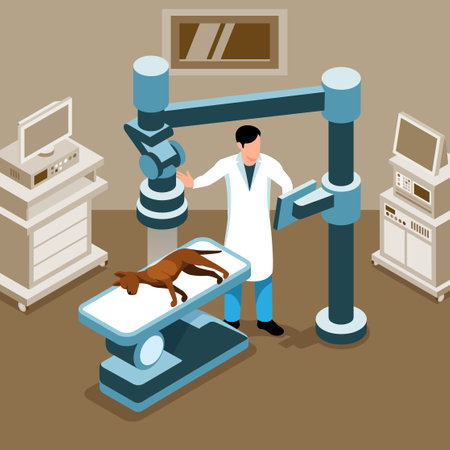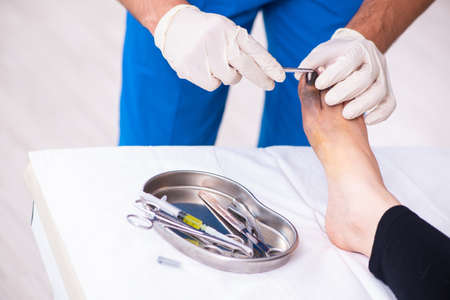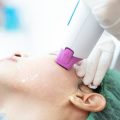1. Understanding Non-Surgical Eyelifts
If you’ve ever found yourself staring into the mirror and noticing your eyelids looking a bit droopy or tired, you’re definitely not alone. In the U.S., more and more people are searching for ways to rejuvenate their eyes without having to go under the knife. That’s where non-surgical eyelifts come in—and honestly, it’s pretty cool how far technology has come.
What Are Non-Surgical Eyelifts?
Non-surgical eyelifts use advanced devices—like ultrasound and radiofrequency—to tighten skin around your eyes without any cuts, stitches, or long downtime. Instead of surgery, these treatments work by stimulating your skin’s natural collagen production, giving you a fresher, lifted look over time.
Why Are Americans Choosing Less Invasive Options?
Let’s be real: surgery isn’t everyone’s cup of tea. From busy schedules to the simple fear of going under anesthesia, plenty of folks would rather skip the scalpel altogether. Here are a few reasons why non-surgical options are catching on:
| Traditional Surgery | Non-Surgical Eyelift |
|---|---|
| Requires anesthesia | No anesthesia needed |
| Longer recovery (weeks) | Minimal downtime (hours to days) |
| Possible scarring | No scars |
| More expensive upfront | Typically lower cost per session |
| Permanence (but riskier) | Repeatable as needed |
Who’s Going for These Treatments?
Across the States—from New York to LA—you’ll find both men and women in their 30s and up exploring these treatments. Whether it’s for a confidence boost at work or just wanting to look as awake as they feel, non-surgical eyelifts are trending because they fit modern lifestyles: quick, subtle, and effective.
If you’re someone who wants to freshen up your look without the drama of surgery, ultrasound and radiofrequency treatments might be right up your alley. Next up, we’ll dig deeper into what these technologies actually do—and why they’re making waves in eye rejuvenation clinics all over America.
2. How Ultrasound Technology Works for Eyelifts
Understanding the Science Behind Ultrasound Treatments
When it comes to non-surgical eyelifts, ultrasound technology—especially treatments like Ultherapy—has become a go-to option for those of us wanting a more refreshed look without going under the knife. But how does it actually work? Let’s break down the science in a way that makes sense.
What is Ultrasound Technology?
Ultrasound technology isn’t new; it’s been used in medicine for decades, mostly for imaging (think: pregnancy scans). But when it comes to skincare, it takes on a different role. The device sends focused ultrasound energy deep beneath the skin’s surface, targeting the same layer that surgeons would typically lift during an eyelid surgery. The best part? There are no incisions or downtime required.
How Does It Help Tighten and Lift Skin Around the Eyes?
The magic happens when the ultrasound waves stimulate your body’s natural collagen production process. Collagen is the protein that keeps our skin firm and youthful, but as we age, its production slows down. By jumpstarting new collagen growth, ultrasound treatments help tighten up loose skin and create a subtle lifting effect—perfect for sagging lids or crow’s feet.
Key Benefits of Ultrasound Eyelift Treatments
| Benefit | Description |
|---|---|
| No Surgery Needed | Non-invasive and needle-free—no scalpels here. |
| Little to No Downtime | You can get treated on your lunch break and head right back to work or errands. |
| Natural-Looking Results | The results develop over weeks as your body makes fresh collagen, so you won’t look “overdone.” |
| Safe and FDA-Cleared | Treatments like Ultherapy are cleared by the FDA specifically for lifting skin around the eyes and brows. |
What Does an Ultrasound Eyelift Feel Like?
If you’re wondering what it’s like to actually get this treatment, here’s my take: During my session, I felt tiny pulses of heat beneath my skin, especially around my brow bone. It wasn’t exactly painful—more like quick zaps that lasted just a few seconds each time. Afterward, there was some mild redness, but nothing that kept me from meeting friends later that day.
Why Consider Ultrasound Over Other Options?
If you want something effective but aren’t ready for surgery (or just don’t want the hassle), ultrasound-based eyelift treatments offer a solid middle ground. They harness your own body’s healing response to tighten and rejuvenate the delicate eye area—without making you look like you’ve had anything “done.” That’s pretty much the sweet spot most guys are looking for these days.

3. Radiofrequency Eyelift Treatments Explained
What is Radiofrequency (RF) for Eyelifts?
Radiofrequency treatments like Thermage have become super popular in the U.S. for folks who want to lift and tighten the skin around their eyes without surgery. Instead of scalpels or stitches, these procedures use energy waves to heat up the deeper layers of your skin, encouraging collagen production and giving you a fresher, more rested look. Think of it as hitting the refresh button on tired-looking eyes—without any downtime that comes with traditional eyelid surgery.
How Does a Radiofrequency Eyelift Work?
The main idea behind RF treatments is pretty straightforward: controlled heat triggers your body’s natural healing process, making new collagen that tightens loose skin. For eyelifts, devices like Thermage have specially designed tips made just for the delicate eye area. The treatment can smooth out fine lines, reduce hooding, and give a subtle lift to droopy lids or under-eye bags.
Breakdown of a Typical RF Eyelift Procedure
| Step | What Happens |
|---|---|
| Before Treatment | You’ll meet with a provider who will check if you’re a good candidate, talk about your goals, and go over any questions. You might get numbing cream to keep things comfortable. |
| During Treatment | The provider uses an RF device (like Thermage) around your eyes. You’ll feel warmth and maybe some tingling, but most people say it’s very tolerable. The session usually lasts about 30-60 minutes. |
| After Treatment | Your skin may be a little pink or puffy right after—but you can head back to work or hit up Starbucks right away. Results show gradually over weeks as collagen builds up. |
What Can You Expect? Real Talk About Results & Downtime
If you’re hoping to walk out with movie-star eyes instantly, RF isn’t magic—but it does deliver steady improvement without risk or recovery time of surgery. Most guys and gals notice their eyes look brighter and less tired within a few weeks. The best part? You don’t have to hide at home while healing; most people get back to their normal routine right after. Some folks choose to repeat the treatment every year or so to keep results looking fresh.
4. Comparing Ultrasound and Radiofrequency: Pros and Cons
A Side-by-Side Look at Non-Surgical Eyelift Treatments
When it comes to non-surgical eyelift options in the U.S., ultrasound (like Ultherapy) and radiofrequency (RF) treatments are two of the most popular choices. Both can tighten skin around the eyes without going under the knife, but they work differently and offer unique experiences. Here’s a straightforward comparison to help you figure out which might suit you best.
Effectiveness
Both ultrasound and RF aim to stimulate collagen production, but their depth of penetration and results may vary. Ultrasound tends to go deeper into the skin, making it a strong pick for those looking for more dramatic lifting effects. RF is great for improving surface texture and mild tightening, often resulting in a more refreshed appearance.
Comfort During Treatment
| Treatment Type | Sensation | Pain Level (1-10) |
|---|---|---|
| Ultrasound | Deep warming, occasional zaps | 6-8 (can use numbing cream) |
| Radiofrequency | Gentle heat, mild tingling | 3-5 (usually comfortable) |
Recovery Time
| Treatment Type | Downtime | Common Aftereffects |
|---|---|---|
| Ultrasound | No real downtime; possible redness or swelling for 1-2 days | Tightness, tenderness, rare bruising |
| Radiofrequency | No downtime; skin may feel warm or slightly pink for a few hours | Mild redness, temporary swelling (rare) |
Cost Considerations (U.S. Market)
| Treatment Type | Average Cost per Session* | # of Sessions Typically Needed | Total Typical Investment* |
|---|---|---|---|
| Ultrasound (Ultherapy) | $1,500 – $3,000+ | 1 session (results last 12-18 months) | $1,500 – $3,000+ |
| Radiofrequency (RF) | $400 – $800+ | 3-6 sessions (spaced a month apart; maintenance may be needed) | $1,200 – $4,800+ |
*Prices vary based on provider experience, location, and extent of treatment.
The American Experience: What to Expect in the Clinic Chair
If you’re someone who wants fast results with minimal fuss and don’t mind a bit of discomfort, ultrasound might appeal to you. If you prefer a gentler approach with less pain—though needing more trips to the clinic—radiofrequency could be your go-to. Either way, both options are widely available across the States, so finding a qualified provider won’t be an issue.
5. What Real Patients Are Saying: Firsthand Experiences
If you’re considering ultrasound or radiofrequency (RF) treatments for a non-surgical eyelift, it’s helpful to hear what real people in the U.S. have experienced. Here are some honest insights and stories from patients who’ve actually gone through these procedures.
Patient Testimonials: Honest Feedback from Across the U.S.
| Name/Age | Treatment Type | Location | Experience Summary |
|---|---|---|---|
| Mike, 42 | Ultrasound (Ultherapy) | Los Angeles, CA | I wanted to tighten my upper lids without surgery. The treatment felt a little prickly, but after a few weeks, I noticed my eyes looked less tired and more open. No downtime, which was awesome for work. |
| David, 51 | Radiofrequency (Thermage) | Austin, TX | The procedure was pretty comfortable—just a warm sensation. My crow’s feet softened and my eyelids definitely look lifted. Friends asked if I went on vacation because I looked so refreshed. |
| Sarah, 36 | Ultrasound (Ultherapy) | New York, NY | I was nervous about pain, but honestly it was manageable. Results took about two months to show up, but now my eyelid skin feels firmer and smoother. |
| Larry, 58 | Radiofrequency (Pelleve) | Chicago, IL | I didn’t want surgery at my age. RF was easy—I even did it during lunch break. Saw gradual improvements over three sessions; looks natural and not overdone. |
| Brittany, 45 | Ultrasound + RF Combo | Miami, FL | I combined both treatments for better results. Minimal discomfort, no bruising or swelling. My eyelids feel tighter and my makeup goes on smoother now. |
Common Patient Takeaways
- No Surgery Needed: Most patients liked that there were no incisions or scars.
- Mild Discomfort: People described the feeling as “prickly” or “warm,” but not unbearable.
- No Downtime: Nearly everyone returned to work or daily life immediately after treatment.
- Gradual Results: Improvements appeared slowly—usually over several weeks to a couple of months.
- Natural-Looking Changes: The look is subtle, not dramatic. Friends notice you look “rested,” not “done.”
What Patients Wish They Knew Beforehand
- Treatments may need to be repeated for best results—most do maintenance every year or so.
- The full effect isn’t instant; patience is key.
- Selecting an experienced provider really matters for safety and outcome.
- You may still need other options if your eyelids are very droopy or have excess skin.
The Bottom Line from Real People
If you’re looking for subtle eyelid lifting without going under the knife, ultrasound and RF treatments are getting solid reviews from patients across the country. Most say it’s worth it for the convenience and natural results—even if you need a little patience while waiting for changes to kick in.
6. What to Know Before You Book
Choosing the Right Provider
If you’re thinking about getting a non-surgical eyelift with ultrasound or radiofrequency treatments, picking the right provider is key. In the U.S., you’ll find med spas, dermatologists, and cosmetic surgeons offering these services. Look for licensed professionals who have experience with facial treatments—especially around the eyes, since this area is delicate. Check out reviews on Google or Yelp, and don’t be afraid to ask for before-and-after photos of real patients.
Provider Checklist
| What to Look For | Why It Matters |
|---|---|
| Board Certification | Ensures medical expertise and safety standards |
| Experience with Eye Area | The eye area is sensitive; experience reduces risks |
| Good Reviews & Real Photos | Shows results are consistent and trustworthy |
| Consultation Offered | You can discuss your goals and concerns upfront |
Understanding Realistic Outcomes
Non-surgical eyelifts using ultrasound (like Ultherapy) or radiofrequency (like Thermage) can help tighten skin and reduce sagging, but they won’t give you dramatic results like surgery. Expect subtle lifting and firmer skin over a few months—not an overnight transformation. Results depend on your age, skin quality, and how your body responds to treatment. Maintenance treatments may be needed every year or two to keep up the effects.
Quick Tip:
If you expect to look 10 years younger instantly, you might be disappointed. These treatments are best for mild-to-moderate sagging or if you want a gradual, natural-looking improvement.
Questions to Ask During Your Consultation
Your first visit is your chance to get all the info you need. Here are some smart questions you should ask:
- How many times have you performed this specific treatment?
- What device do you use—Ultherapy, Thermage, or another brand?
- What kind of results should I expect based on my skin?
- How long will it take to see full results?
- Are there any risks or side effects I should know about?
- How much does it cost—and are there any package deals?
- Do I need more than one session?
- What’s the downtime? Will I need to take time off work?
- If I’m not happy with the results, what are my options?
The bottom line: Do your homework, don’t rush into booking, and make sure you feel comfortable with your provider before moving forward.


